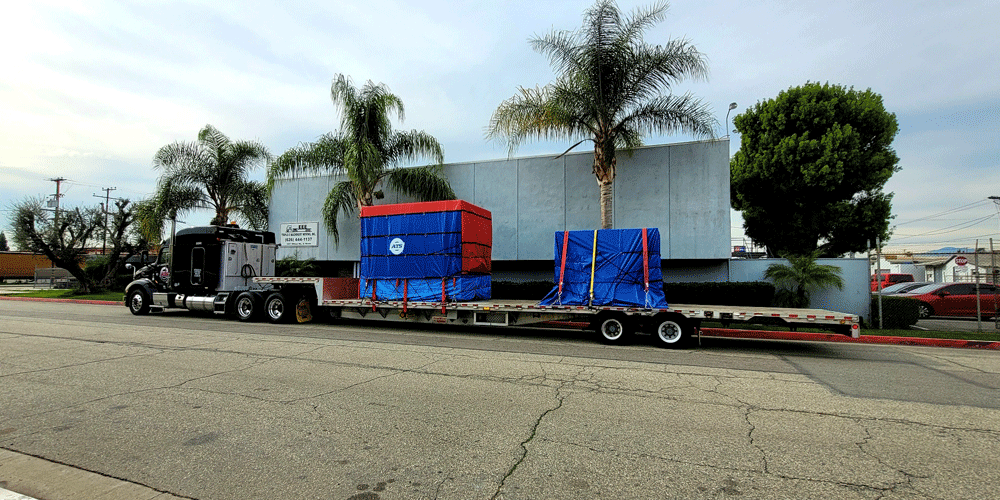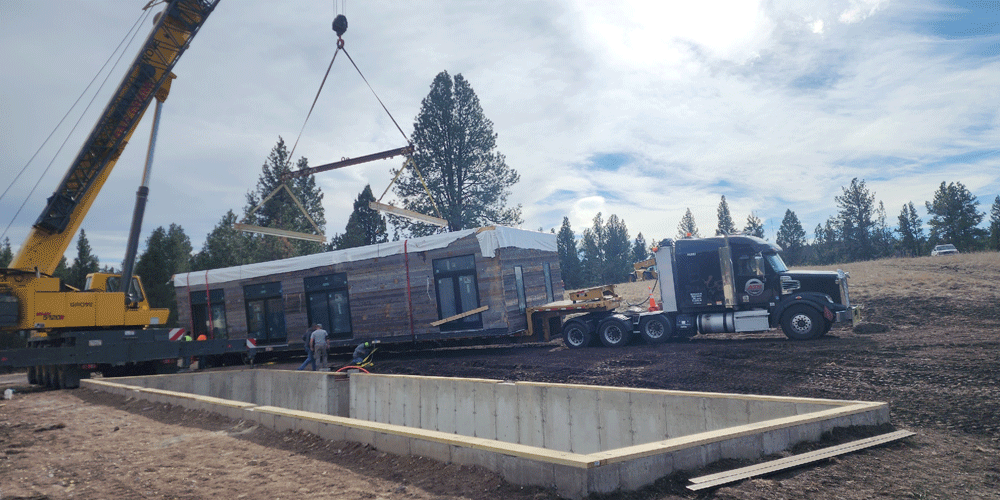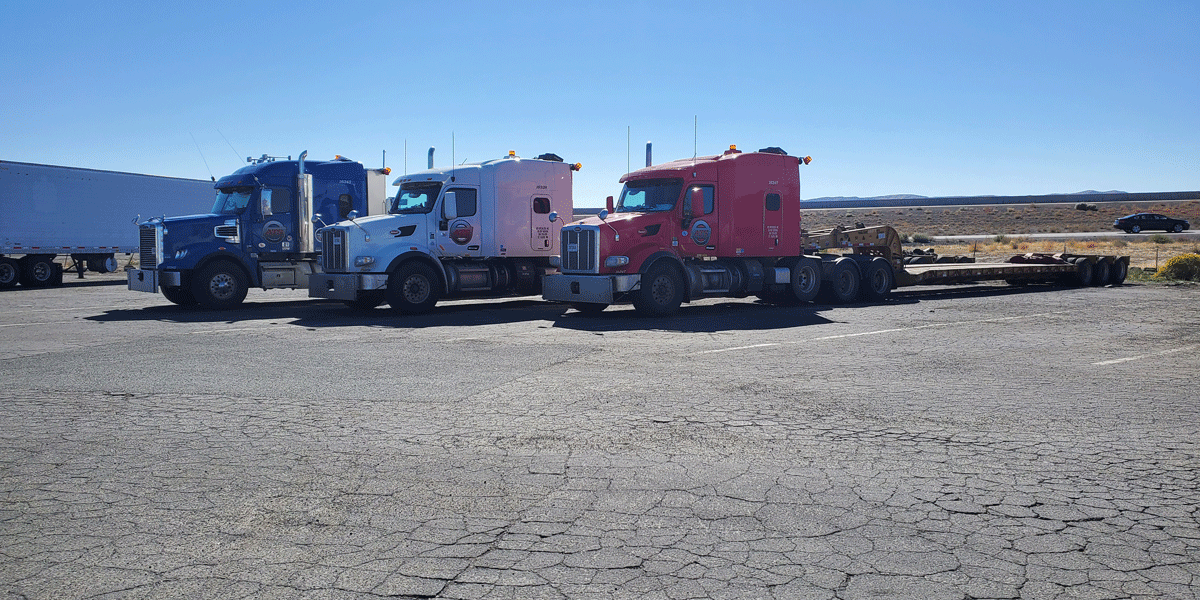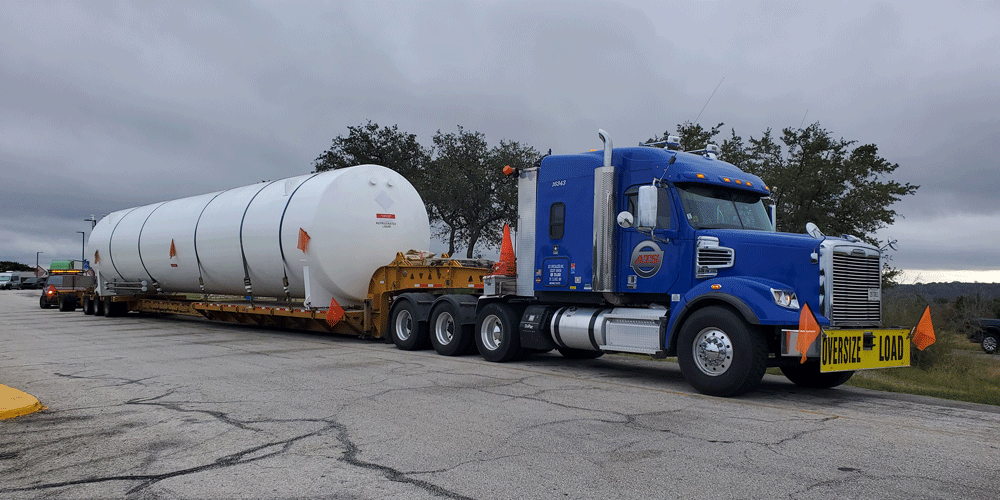Anderson Trucking Service Reviews: Top Driver Complaints
Jimmy has been with ATS for four years as a driver consultant. He prides himself on giving each driver 100% commitment to ensure they are in the best possible situation.
Bellyacher, grumbler, whiner — these are all synonyms of a complainer. As a driver recruiter here at Anderson Trucking Service (ATS), I’m used to hearing tons of complaints — whether it’s about ATS or the trucking industry in general.
Some common complaints among truck drivers in the industry include bad pay, lack of home time and lack of respect. Other issues may include poor equipment and lack of support from dispatchers or other staff.
If you want to learn more about ATS and what we have to offer or if we might be the right company for you, we’re glad you’ve found your way here.
While some people like to complain just for the sake of complaining, that doesn’t mean their complaints don’t have merit. That’s why we’ve put together a list of the top complaints about ATS along with some explanation regarding the reason we do what we do here.
Then, it’s up to you to decide if it’s the right company for you.

Problem #1: The Pay is Too Low and There are No Loads
You’d be hard-pressed to find a driver in the industry right now that doesn’t have some sort of complaint about their pay. Unfortunately, that’s the reality of the market we’re in right now.
Parts and labor shortages during the height of the pandemic, inflation and a shift in consumer spend have all played a role in fluctuating freight prices. While freight rates were at an all-time high during the pandemic, rates have dropped significantly since. If you’re a newer driver, this may have been a major shock to you. For more seasoned drivers, it’s probably nothing new.
Despite freight rates being lower now than they were in, say, 2020 or 2021, rates are still higher than what they were pre-pandemic.
Related: To better understand what’s going on with the market and freight prices, learn more in this 2023 forecast article.
Every trucking company is dealing with lower-priced freight and less freight availability, but ATS is assuredly still a Top Pay Carrier. Because we’re a top-paying carrier and rely on customer-direct freight from a wide customer base, ATS drivers make a great living and keep moving. Check out our current pay.
That means, even though ATS drivers are making less than they were in 2020, they’re still making more than they would at a lot of other companies. And because we have that wide customer base, we can still get you loads to keep you moving.
You may not have as many options as when freight demand was high and every load might not pay as much as it used to, but ATS isn’t fighting other carriers for loads or bidding on loads in the spot market. That’ll give you the stability you need to keep making money.
Related: When Will My Pay Increase?
Problem #2: The Front-Facing Camera System, Lytx
A lot of drivers complain about the dash camera system we use here at ATS. The system we utilize is called the Lytx Driver Safety Suite. It’s a video system that records continuous footage and stores up to 100 hours of footage.
Lytx cameras can be forward-facing, driver-facing or dual, but at ATS, we only utilize the front-facing portion of the camera. The front-facing cameras only observe what’s going on outside the cab of the vehicle, not what’s going on inside. You don’t have to worry about your privacy being invaded.
The camera continuously records footage and if a specific “event” occurs, the system is triggered and sends a clip to the ATS safety team. Accidents or risky behaviors include hard braking, lane departures without signaling, close following distance and driving above the speed limit.
The safety aspect of the camera is frustrating to some drivers. They deem the cameras too sensitive and think the safety team is trying to punish them. The Lytx camera is designed to protect, not penalize.
If the camera picks up repeated risky behaviors, you’ll be coached on it by an ATS team member, whether that’s your driver manager or someone on the safety team. This practice is designed to help you improve your driving skills, not to punish you or babysit you.
The cameras are not only used as a safety tool but also as a way to protect ATS drivers. For instance, if you’re involved in an accident with a passenger vehicle, oftentimes as the truck driver, you’re automatically seen as the one who’s at fault. With a camera system in place, you can be vindicated.
The recorded footage is not only viewed by the ATS safety team but it can also be viewed by the appropriate officials to help them understand what happened and determine who’s at fault.
Countless drivers have been saved from costly fees and other penalties because of the front-facing camera footage.
However, the camera system can still be frustrating for some veteran drivers who may not have had a camera in their trucks for most of their time as a driver. It can be an adjustment, but ATS will train you to help you understand how the system works.
Keep in mind: You’ll be hard-pressed to find a major carrier that doesn’t require some form of a camera system in the truck. Some of those carriers even require an inward-facing camera. Unless you want to operate totally independently as an owner-operator or you choose a mom-and-pop type of carrier without cameras, you’ll need to adjust to some form of a dash cam.
Problem #3: Every Truck Doesn’t Have an APU
It isn’t uncommon for drivers to hang up on recruiters the second they find out that every truck in our fleet doesn’t have an auxiliary power unit (APU) installed. While our company trucks all have APUs, a majority of lease-purchase trucks do not.
While an APU is a great way to lower idle time, there are other effective, cost-friendly options available to drivers, such as bunk heaters, inverters and generators. An APU can be installed in your lease truck should you choose to purchase one.
Related: Is an APU worth the investment?
Problem #4: Drivers Don’t Get Home Enough
ATS is, first and foremost, an over-the-road (OTR) company. Drivers can expect to go home every two or three weeks (or longer if they choose). This equates to about a day and a half at home for every week you’re on the road.
While we’d love to get drivers home more often than that, we’re a true OTR carrier and, in order to serve our wide range of customers, we need to hire OTR drivers.
This is a deal-breaker for a lot of drivers who’d like to get home more often. That might be the case for you reading this. And if so, that’s okay. You might require more home time to be with your family and we get that. Keep in mind that we do have some home weekly options if you live in our southeast and midwest hiring areas.
As a family-owned company, we understand the importance of being home with your loved ones. Driver managers take your home time requests seriously and get you home when you need to be home. In the case of family emergencies, we’ll do all we can to get you home as soon as possible.
Problem #5: We Don’t Have Enough Trucks
CES, an ATS-affiliated company that drivers can lease trucks with, gets complaints from some lease drivers about our truck availability. There aren’t a lot of empty trucks sitting in our fleet. It speaks to our low turnover rate.
However, this upsets some drivers who want a wider selection of trucks to choose from. CES offers Freightliner, Peterbilt and Volvo models, but that doesn’t mean they always have all of those trucks available when you come to orientation.
However, consider that drivers who come here to lease a truck have little risk. Most leases have no money down and there’s never a credit check. It’s a great way to get into a lease and work your way toward ownership.
Once you get through the first year of your lease, you have the option to pursue the Top Anderson Performers Program (TAP Program). With this program, you can go to the dealership, spec out a truck and work out a payment plan to purchase the truck.
Related: Learn more about ATS truck selection at driver orientation.
Problem #6: Trucks are Always Broken Down
A lot of drivers complain about trucks breaking down. Unfortunately, we can’t control when a truck will or won’t break down. If we did, we certainly wouldn’t program them to break down at the most inopportune time, or ever. We don’t want you to go through the stress of being broken down. It isn’t fun for anyone.
However, we aren’t the truck manufacturer and we can’t control part failures and breakdowns. We can only control what we can control. Breakdowns happen whether the trucks are new or old.
For ATS, that means focusing on maintaining our trucks, offering three different truck makes, having a thorough inspection process before the truck goes from one driver to the next, having a department dedicated to roadside assistance and putting programs in place to help drivers cover the cost of repairs. We trade in our equipment regularly and we're constantly adding new trucks to the fleet. Most of our trucks aren't more than a few years old.

Finding the Best Carrier for You
It's important to note that every company receives negative feedback and drivers industry-wide have complaints about pay, home time, front-facing cameras and equipment — ATS isn’t the only major carrier that hears these complaints from drivers.
There are pros and cons to working at every trucking company out there. What’s important is that you make a list of needs and wants, then thoroughly research and consider multiple sources of information before making a decision about a company.
It’s also important to understand that some complaints are just part of the job as a truck driver. For instance, I get frustrated when I can’t get in touch with drivers or I have bad service. Those are just parts of my job I sometimes have to deal with.
If you find yourself increasingly frustrated by the trucking industry, it may be time to pursue another path.
If you’re still wondering if ATS is the right company for you, check out this in-depth review of the programs and offerings at ATS.


